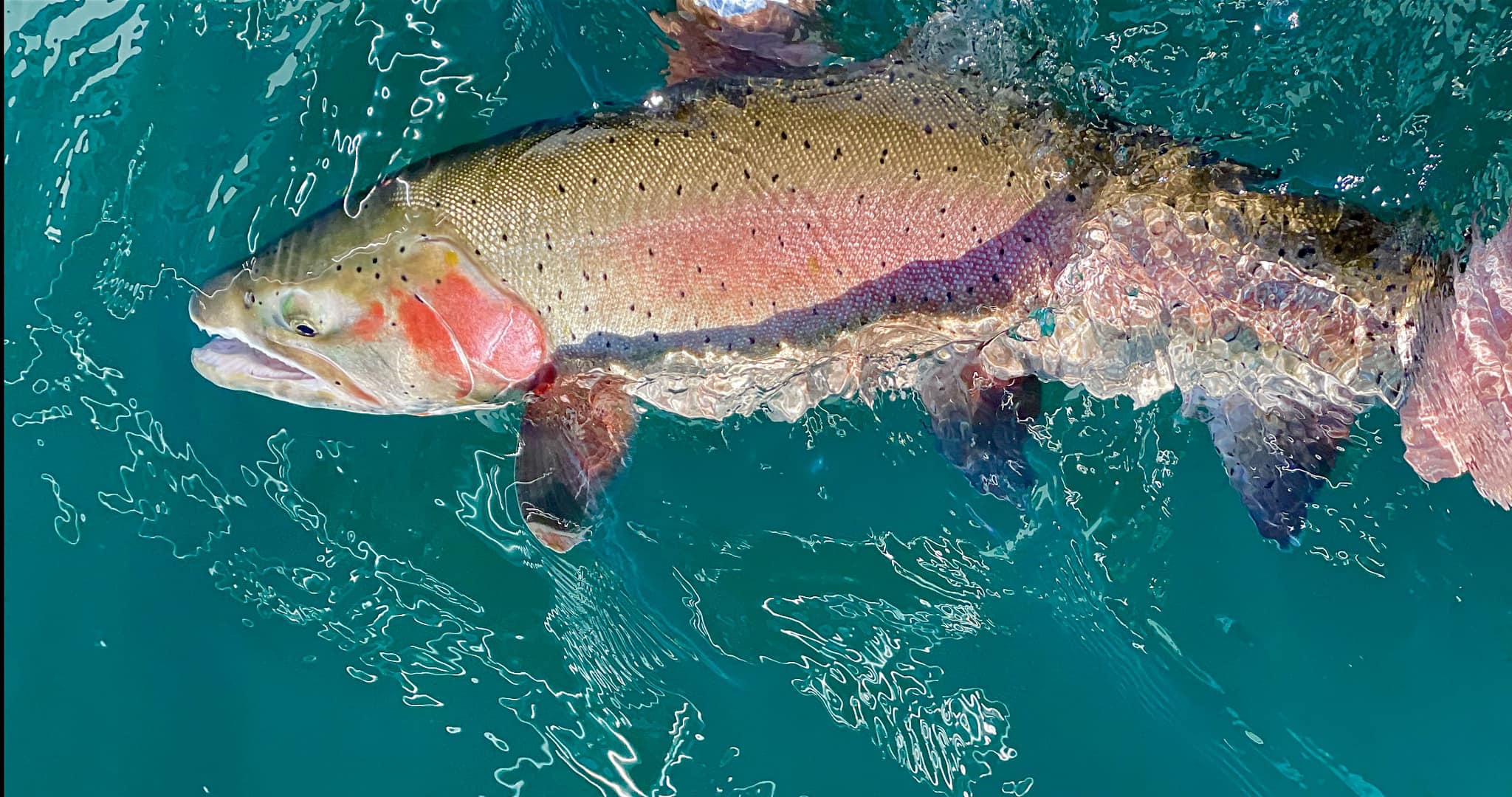
The fish and the lake are both remarkable, and stunningly beautiful. I don’t know of anywhere in the world where fly fishers have a legitimate chance of catching a 10-pound-plus cutthroat trout surrounded by the snow-capped Sierra. It’s an amazing fishery, unlike any other I have seen, and when I learned the history and effort that have allowed it to exist today, it made the lake even more captivating and mysterious.
Pyramid Lake’s Lahontan Cutthroats
Contemporaneously, on the Utah-Nevada border, biologists and BLM workers scoured the remote mountain ranges for remnant populations of another imperiled cutthroat, the Bonneville subspecies. Also feared to be extinct in its pure form, Bonneville Cutthroats were at the beginning of their own comeback story. In 1975, a BLM worker was searching for genetically pure “Bonnies” on the east slope of Pilot Peak in far western Utah when he found something unexpected. In a tiny trickle of water, he found a cutthroat trout with unusual features for the eastern Great Basin. He collected a few samples and sent them to one of the leading fish biologists at the time, Bob Behnke.
Based off morphology alone, Behnke compared these specimens to all the known subspecies of cutthroat trout. He noticed a relatively high number of gill rakers (for the purpose of filter feeding phytoplankton and chironomids), and a large amount of pyloric caeca (stomach folds found in piscivorous fish). With these features in mind, Behnke determined that these fish were the same lineage of Lahontans that once patrolled the depths of Pyramid Lake. But he couldn’t prove it, and the little Lahontans of Pilot Peak would stay isolated for two more decades.
During the late 1990s, DNA sequencing technology advanced to the point where the Pilot Peak fish could be compared with museum specimens of the original Pyramid Lake fish. The DNA analyses were a match, and the Pilot Peak fish were proven to be the direct descendents of the original Pyramid Lake Lahontans! How did they get there? Shoddy records from a Nevada state wildlife commission suggests that programs existed to spread the Pyramid Lake Lahontans to small streams across the state during the early 20th Century. Miraculously, this single, small population survived drought, wildfires, and the limitations of living in a tiny creek to keep alive the genetic freakishness of the original Pyramid Lake fish. A hatchery program expanded, and biologists introduced the Pilot Peak strain to Pyramid Lake in 2006. The rest is history, as the Pilot Peak Lahontans now exceed 20 pounds on a regular basis.
Pilot Peak Lahontan cutthroat backstory
The recovery of the Lahontan cutthroat trout is a true resurrection story. Weighing in at 40 pounds, with stories of the trout getting up to 60, the Lahontan is the largest species of cutthroat trout. The fish are characterized by their crimson red-orange slash marks on the throat under the jaw with black spots scattered over their steel gray to olive green scales. They are Nevada’s state fish and hold a cultural significance to the Pyramid Lake Paiute Tribe.
Lahontan cutthroat trout species thought to be extinct rediscovered in Utah Creek
I am sort of surprised I haven’t mentioned Pyramid Lake Fishing before. I have known the sad story of its demise since I was a kid. Every fisherman has bemoaned the destruction of the largest race of cutthroat trout in the world. How many times did I think if there was only a way to bring them back. Against seemingly impossible odds, it has happened. I have followed the fishery on line for the last 10 years and it has been a boon. The trout are the real deal, huge and getting bigger. The lake still has a lot of challenges but the return of the trout has been a miracle.
As mentioned, tribal authorities have been key in the recovery.
It is mostly a winter fishery and on right now.
The pic inspired this post. I have saved 100’s of pix of Pyramid trout but this one is more attractive than most. The colors are often muted or variable between fish.